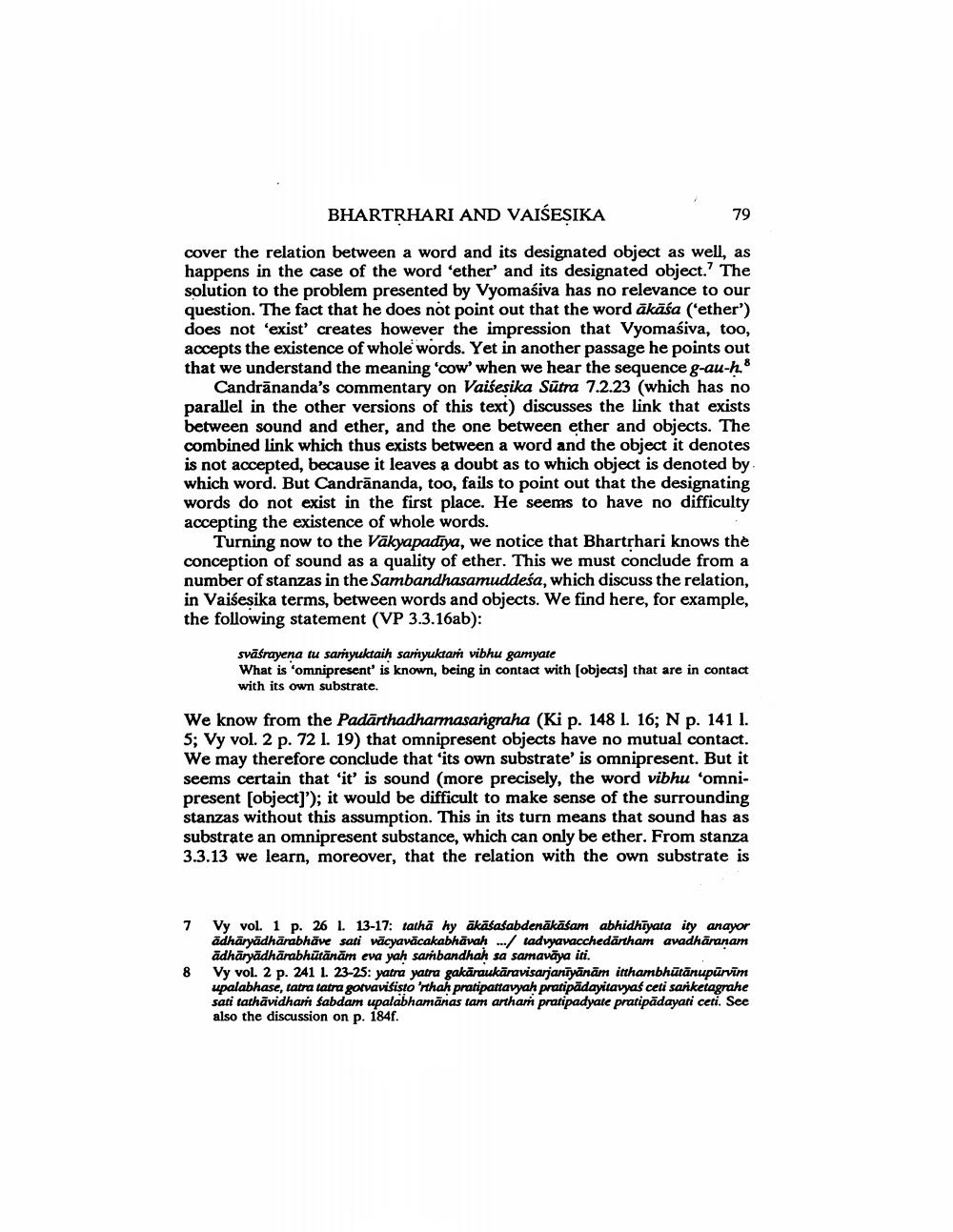Book Title: Studies On Bhartrhari 5 Bhartrhari And Vaisesika Author(s): Johannes Bronkhorst Publisher: Johannes Bronkhorst View full book textPage 5
________________ BHARTRHARI AND VAISESIKA 79 cover the relation between a word and its designated object as well, as happens in the case of the word 'ether' and its designated object. The solution to the problem presented by Vyomaśiva has no relevance to our question. The fact that he does not point out that the word ākāśa ('ether') does not exist' creates however the impression that Vyomaśiva, too, accepts the existence of whole words. Yet in another passage he points out that we understand the meaning 'cow' when we hear the sequence g-au-h. Candrānanda's commentary on Vaiśesika Sūtra 7.2.23 (which has no parallel in the other versions of this text) discusses the link that exists between sound and ether, and the one between ether and objects. The combined link which thus exists between a word and the object it denotes is not accepted, because it leaves a doubt as to which object is denoted by which word. But Candrānanda, too, fails to point out that the designating words do not exist in the first place. He seems to have no difficulty accepting the existence of whole words. Turning now to the Vakyapadiya, we notice that Bhartrhari knows the conception of sound as a quality of ether. This we must conclude from a number of stanzas in the Sambandhasamuddeśa, which discuss the relation, in Vaiśesika terms, between words and objects. We find here, for example, the following statement (VP 3.3.16ab): svāśrayena tu sariyuktaih samyuktar vibhu gamyate What is 'omnipresent' is known, being in contact with (objects that are in contact with its own substrate. We know from the Padārthadharmasangraha (Kip. 148 1. 16; N p. 141 1. 5; Vy vol. 2 p. 72 1. 19) that omnipresent objects have no mutual contact. We may therefore conclude that 'its own substrate' is omnipresent. But it seems certain that 'it' is sound (more precisely, the word vibhu 'omnipresent (object)'); it would be difficult to make sense of the surrounding stanzas without this assumption. This in its turn means that sound has as substrate an omnipresent substance, which can only be ether. From stanza 3.3.13 we learn, moreover, that the relation with the own substrate is 7 Vy vol. 1 p. 26 1. 13-17: tathā hy ākāśasabdenākāśam abhidhiyata ity anayor adhāryādhārabhāve sati vācyavācakabhāvah .../ tadvyavacchedārtham avadhāranam ādhāryādhānabhūtānām eva yah sambandhah sa samavāya iti. Vy vol. 2 p. 241 1. 23-25: yatra yatra gakāraukāravisarjanīyānām itthambhūtānupūrvim upalabhase, tatra tatra gorvavifisto'nthah pratipattavah pratipādayitavyas ceti sariketagrahe sati tathāvidhar sabdam upalabhamānas tam arthar pratipadyate pratipadayati ceti. See also the discussion on p. 184.Page Navigation
1 ... 3 4 5 6 7 8 9 10 11 12 13 14 15 16 17 18 19 20
